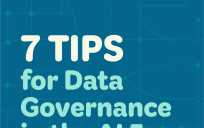The problem:
How many times have you or someone you know described sitting around a table (real or virtual) with a facilitator saying something akin to “Does anyone have a use case we can use AI for?,” followed by the common responses of blank stares, mentions of drafting emails/scheduling meetings, or acting as a call center. One of the chief issues with artificial intelligence (AI) adoption and implementation in organizations comes down to use case development. In that, people often misunderstand or just don’t know what a “use case” really means. To fix this, we need to develop a good grasp on where AI fits within the system-complexity hierarchy (with respect to your organization) and help decisionmakers develop a shared understanding of what an “AI use case” entails.
What is a use case?
Typically, a use case in software development involves defining the system’s overall impact within a business context, focusing on inputs, system functions, and outputs. It’s very linear, very flat, and a very appropriate definition and guiding principle for traditional system deployments. However, with the advent of AI, especially generative AI, or GenAI (think large language models), we need to rethink this approach, because AI solutions are much more complex than traditional systems and their generative outputs cut vertically and horizontally both through and throughout the enterprise.
The cross-cutting capability of GenAI drastically enhances the complexity of standard stock/flow feedback loops fundamental to systems thinking and standard process design. That enhances feedback loops with near-instantaneous information from the task/process/system levels and pushes those enhancements throughout the enterprise, taking your dynamic system to a greater level of efficiency.
For instance, while traditional systems deployment for business functions (like finance or HR) involves predefined tasks and processes (such as invoice processing or applicant tracking), AI solutions touch multiple functional areas simultaneously at the task, process, and system levels. By intersecting various departments, such as finance, legal, IT and HR, GenAI creates novel outputs from freshly automated and enhanced inputs. This complexity means decisionmakers from the C-Suite to end users must (or at least should try to) consider all interfacing business processes when deploying AI. Every input categorized into an AI solution affects its outputs, requiring a non-linear, interconnected approach rather than a simple flowchart.
Your AI tool is now your front-line employee.
Practically, this shift implies a wholistic redesign of business processes and human capital because AI’s ability to generate unique and novel information requires a transformation in how businesses operate. Human roles will evolve from task-based work to managerial oversight of AI outputs, making skills such as emotional intelligence and communication increasingly essential for the modern workforce. These supervisory and managerial level tasks (essentially “grading” the work of the AI solution) are the essence of the “human in the loop” best practice. That means raising the bar for team members entering the workforce, so they have both technical understanding of the AI tools they’ll supervise and the emotional intelligence and communicative capacity to excel in organizations with fewer opportunities for human-to-human communication than other agencies.
If AI changes the way(s) we do business, then the nature of our business must change.
So, what is an “AI use case”? It’s a modified organizational change management plan. Considering that AI (especially GenAI) necessitates a transformation in business operations (tasks, processes, systems, humans, culture, etc.), the deployment of AI must be managed with the same rigor and structure as any other significant organizational change, but with an increased appetite for risk and emphasis on the proximity effect (the closer the AI is to other systems and processes, the greater the effects).
This involves defining clear objectives to understand what the AI solution aims to achieve, outlining the scope to determine the extent and boundaries of the implementation, and identifying stakeholders who will be impacted. A comprehensive communications plan is critical to ensure that all parties are informed and aligned, while risk management strategies help mitigate potential issues. A detailed timeline ensures that the AI implementation progresses in as structured and timely a manner as possible given all your organizational unknown-knowns and unknown-unknowns.
By approaching AI use case development and implementation as organizational change management strategy development, organizations can better manage the complexity and ensure successful AI adoption. However, no plan survives first contact, so a level of risk tolerance is needed, as we aren’t just buying and implementing systems, we’re changing the very nature of what work is and adjusting the skillsets needed for humans to be successful in this new environment.
P.S., a word of caution for any executive or stakeholder eagerly awaiting the recapture of labor costs: The more of the base you cut away from your pyramid, the less justification you have for your continued existence at the top of it.
Matthew Kilbane is currently Innovation Lead at Concurrent Technologies Corporation.





Leave a Reply
You must be logged in to post a comment.